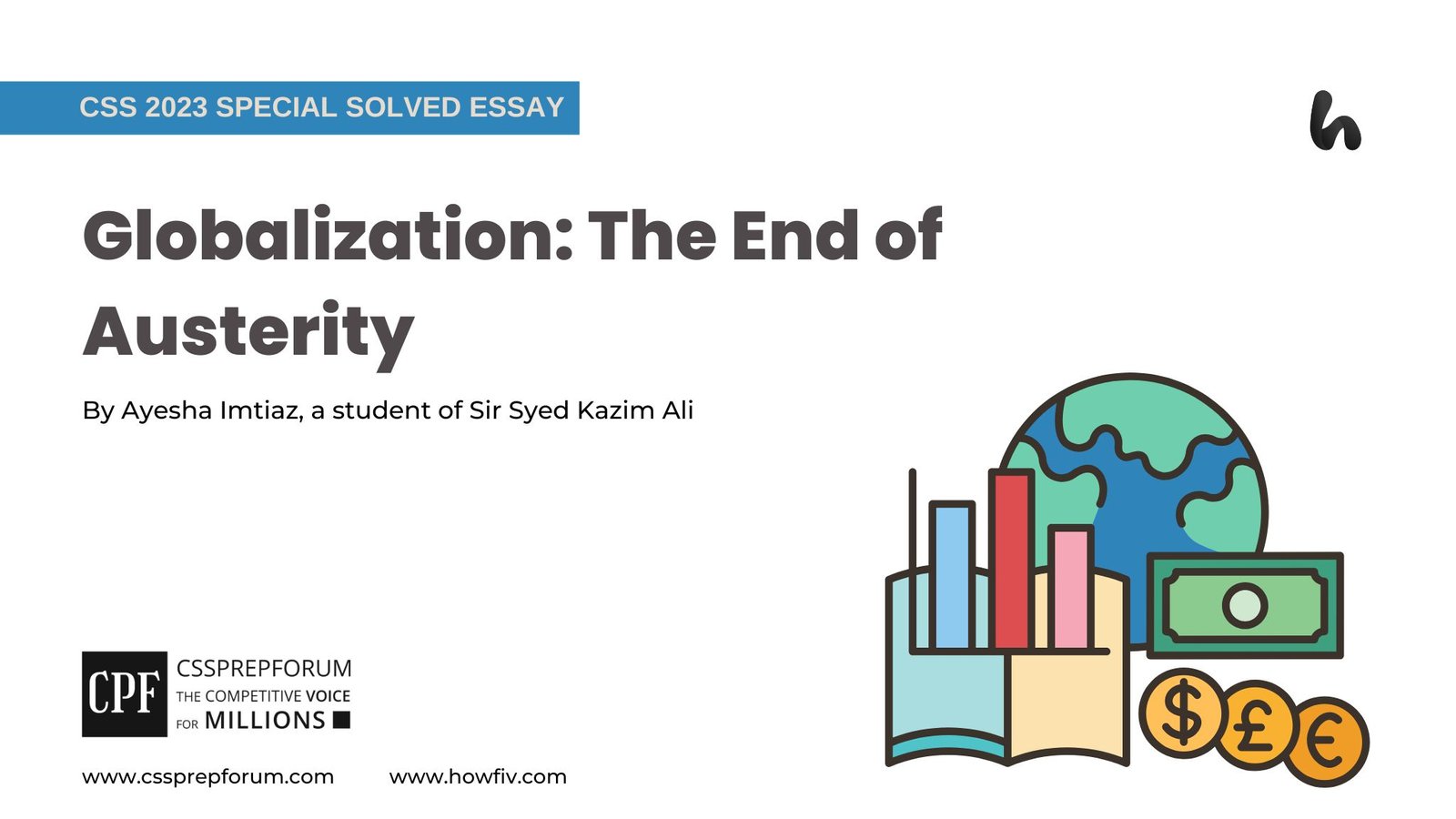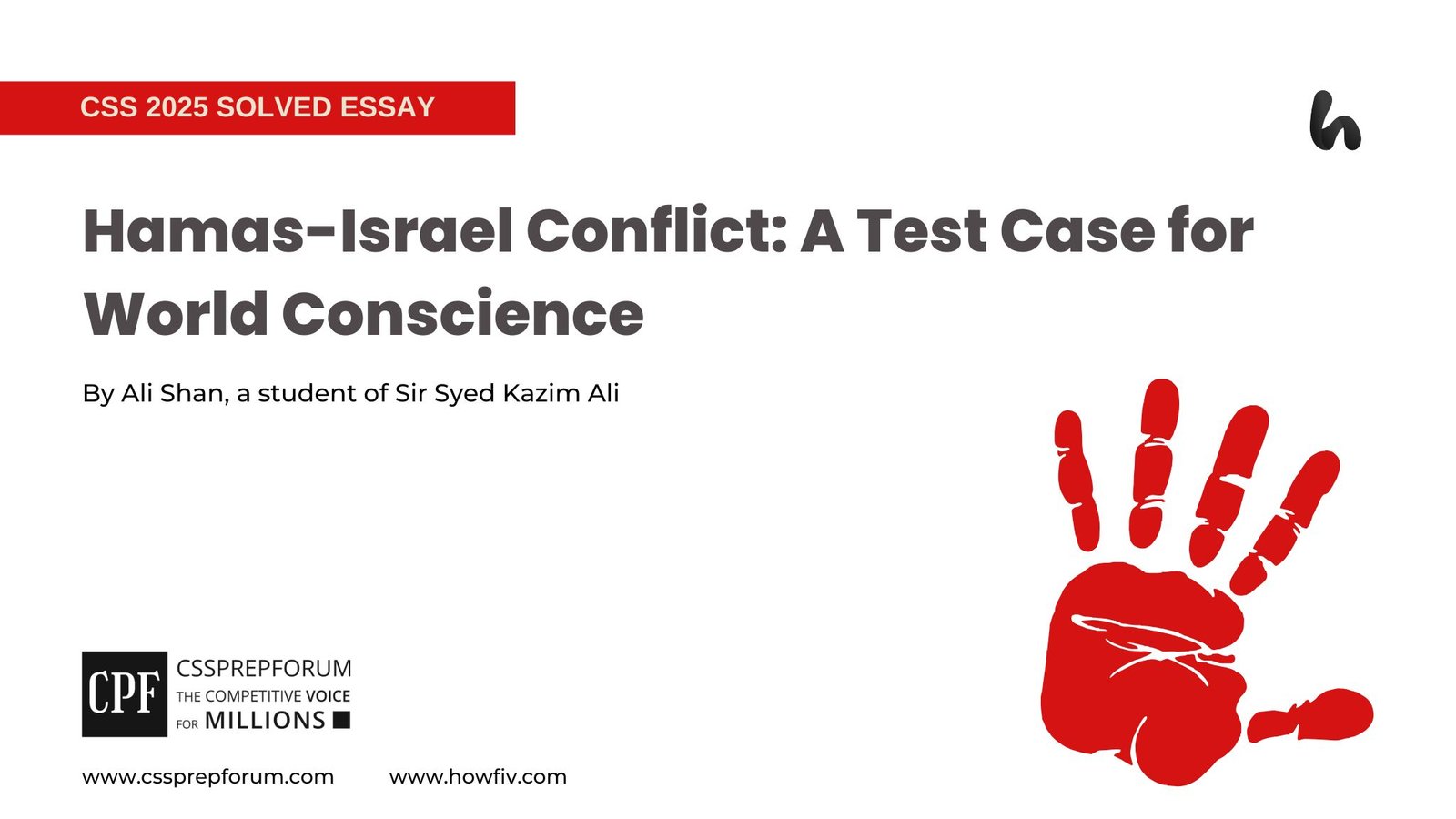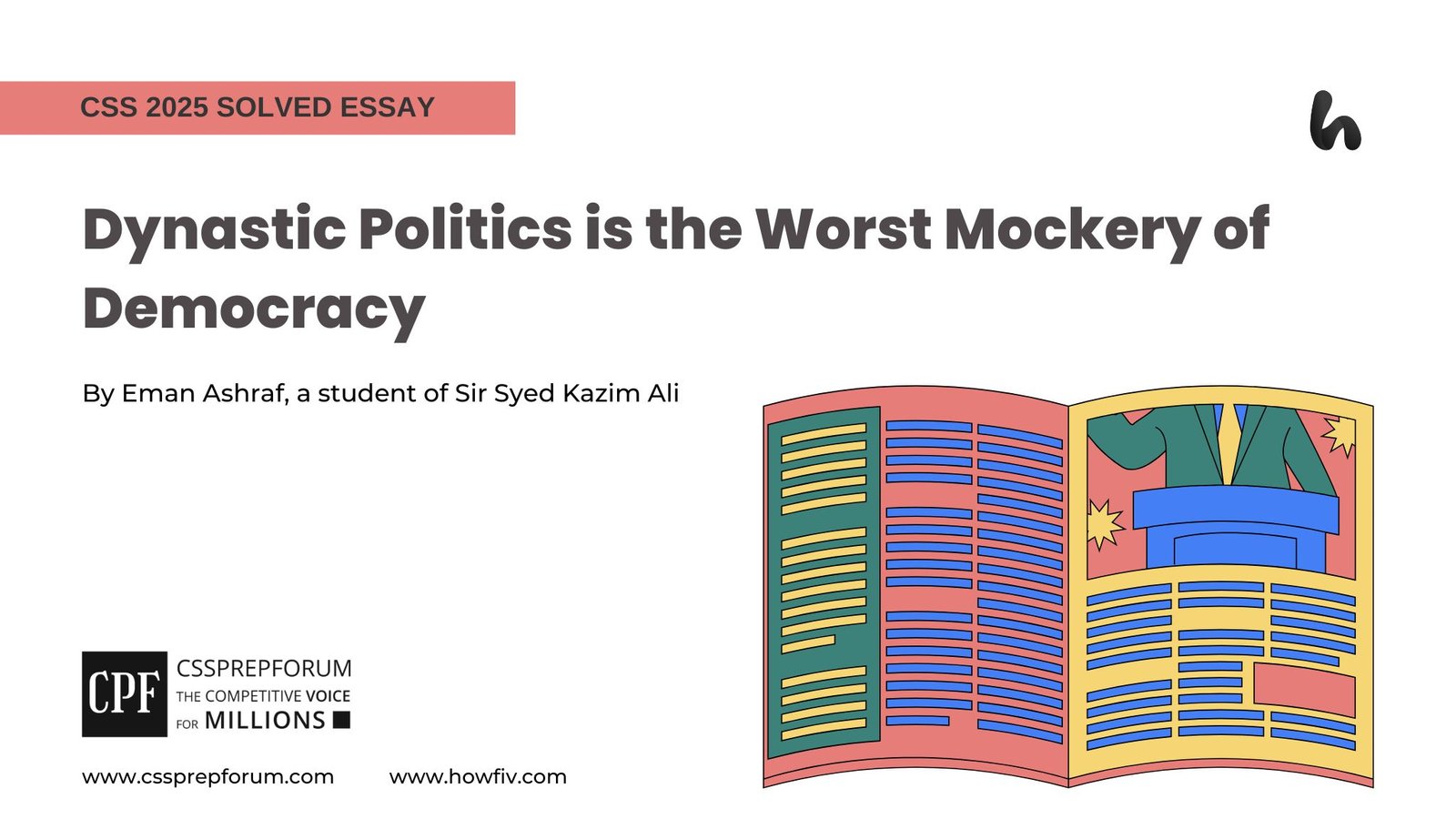Review of the Latest Pakistan Energy Policy | Daily Writeup | Opinions
The following article of CSS Current Affairs is solved by Hamda Faisal under the supervision of Howfiv’s Pakistan Affairs Coaches. She learnt how to attempt 20 marks question and essay writing from Sir Syed Kazim Ali, Pakistan’s best CSS and PMS English essay and precis teacher with the highest success rate of his students. This solved past paper question is attempted on the pattern taught by Sir to his students, scoring the highest marks in compulsory and optional subjects for years, and uploaded to help aspirants understand how to crack a topic or question, how to write relevantly, what coherence is, and how to include and connect ideas, opinions, and suggestions to score the maximum.

Outline
1- Introduction
2- Understanding the Energy Profile of Pakistan
3- Analysis of Key Issues Crippling Pakistan’s Energy Sector
4- A Critical Review of the Latest Pakistan’s Energy Policy
- ✓Alternative and Renewable Energy 2019
- ✓National Electricity Plan 2021
- ✓Fast Track Solar Initiative 2022
- ✓National Energy Efficiency and Conservation Policy 2023
- ✓National Action Plan 2023-2030
5- Conclusion

1- Introduction
Where energy is the driving force for the economy, providing a base for a country to establish prosperous socio-economic and political lifelines, an untended energy crisis can erode and cripple its economic foundations. Likewise, Pakistan’s energy crisis is also a key factor in aggravating its economic destabilisation. The country has surpassed the forecasted installed capacity, yet losses in transmission and distribution round up to 20 per cent, severely impacting the efficiency of the whole energy sector. Though many factors are hindering the growth and development of the energy sector, numerous plans and policies have been enacted under the Pakistan Energy Policy since 2019 to counter and remedy the issues and push the country towards stabilisation in the socio-economic sphere. This question critically reviews the latest enacted policies and action plans and draws conclusions based on it.
2- Understanding Pakistan’s Energy Profile
Before reviewing the energy policy, it is critical to establish an understanding of Pakistan’s energy profile to gauge the efficiency and validity of the plans. Though Pakistan’s installed capacity for power generation now exceeds its demand, the country still faces power outages and load-shedding due to losses in generation, transmission, and distribution owing to outdated and poor infrastructure. According to the Economic Survey of Pakistan FY23, the country’s total installed capacity stands at 41,000 MW, while its highest demand during peak summers is 28,000 MW—creating a shortfall of around 7000-8000 MW. Moreover, the thermal sources, mainly imported coal, oil, and petroleum, make up the major chunk of the energy mix at approximately 60%, proving to be a huge financial burden on the sector. In a brief overview, the shortsightedness in planning and upgrading has created an inefficient system that is incapable of adapting to trends and demands.
3- Analysis of Key Issues Crippling Pakistan’s Energy Sector
The many unique characteristics of Pakistan’s energy profile, like the unfavourable high-cost energy mix and outdated and inefficient infrastructure, have plagued a lot of crippling issues within the energy sector. For instance, Pakistan’s energy sector has been facing a financial deficit since 2006, the recent circular debt having grown to 2.3 trillion rupees. According to the State of Industry Report 2021 by the National Power Regulatory Authority (NEPRA), almost one-fifth of the total energy generated was lost in transmission. Moreover, the independent power plants (IPPs), inefficient public sector generation plants, shortage of transmission and distribution (T&D) network, a suboptimal energy mix, and inter-DISCO tariff differential are some of the few issues hindering the system. And in an already vulnerable system, ineffective planning and ignorance of the underlying issues can further exaggerate the impacts. Therefore, recognising and understanding the systematic flaws opens ways for the most effective planning and policies.
4- A Critical Review of the Latest Pakistan Latest Energy Policy
By reviewing the policies proposed by the Ministry of Energy since 1994, it is evident that the lack of long-term vision has drastically impacted Pakistan, where the cost of generation has increased considerably due to the ballooned capacity payment. The subsequent power policies failing to address this issue have also exacerbated the other underlying problems, focusing solely on increasing installed capacity. They either lacked an integrated energy planning approach or failed to implement the policies with consistency and audits. The structural reforms seek to compensate for the financial loss by increasing tariffs instead of focusing on increasing efficiency and minimising the losses. They fail to address the direct causes, setting the system on a path of self-destruction. Moreover, the energy policies of the early 2000s turned in the direction of indigenous resources, competitive bidding, and renewable resources, yet they failed to minimise financial incentives and subsidies to produce an efficient and profitable system.
Moving onto the latest energy policy of Pakistan, there is not only an enthusiastic trend towards renewable resources but also a long-term approach. Since 2019, the Ministry of Energy, along with National Electric Power and Regulatory Authority (NEPRA) and National Energy Efficiency and Conversation Authority (NECCA), has introduced the Alternative and Renewable Energy (ARE) Policy 2019, National Electricity Plan 2021, Fast Track Social Initiatives 2022, National Energy Efficiency and Conservation (NEEC) Policy 2023, and National Action Plan 2023-2030.
- ✓Alternative and Renewable Energy 2019
The Alternative and Renewable Energy (ARE) 2019 power play aims to increase the generation capacity through renewable sources to at least 20% by 2025 and 30% by 2030. According to the Economic Survey of Pakistan FY23, the ARE policy has induced a drastic change by increasing the country’s share of renewable resources in the installed capacity from zero per cent in 2014 to 6.8% in 2023. Although to achieve its projected gap, there is a herculean gap of around 13.2% in two years; the ARE has moved to diversify the unsustainable energy mix of the power sector through a definite target, competitive building, generation capacity expansion and displacement of expensive energy. However, it fails to target development in the distribution system and reduce tariffs to minimise the financial impact. Thus, it considers only one angle of the problems rampant in the energy sector of the country.
- ✓National Electricity Plan 2021
The National Electricity Plan 2021 has set a goal for access to affordable energy, energy security, and sustainability through a focus on efficiency, transparency, and financial viability. It’s an all-encompassing policy targeting generation, transmission, distribution, and supply. According to NEPRA, the DISCO transmission and distribution (T&D) losses are at 17.5% in 2021, with a deficit of 70 thousand million rupees. The National Electricity Plan 2021 has not set a definite target to measure its progress. No substantial plan has been put forward to mitigate the circular debt of the power sector, which has now amounted to 5.5 trillion rupees.
- ✓Fast Track Solar Initiative 2022
The Fast Track Solar Initiative 2022 wants to increase the country’s reliance on indigenous and renewable resources. For this, it has a three-pronged strategy: substituting the expensive and imported fossil fuels with solar PV energy as an energy source, installing decentralised and cost-effective solar PV generation on 11 kV feeders, and moving towards solarisation of public buildings. To encourage this, the policy has introduced a net metering system. According to the Economic Survey of Pakistan FY23, 50 thousand net-metering systems of 863.4 MW total capacity have been installed. The initiative supplements the ARE 2019 policy and contributes to increasing the share of renewable resources in the generation of energy in Pakistan. It provides incentives for increasing renewable production.
- ✓National Energy Efficiency and Conservation Policy 2023
The NEEC Policy seeks capacity development of the power sector to ensure energy efficiency and conversation. Where it targets maximising generation capacity, it also focuses on decreasing transmission and distribution losses. It expands the goals of previous policy and introduces a comprehensive regulatory framework to audit and implement the energy vision. It focuses on an integrated energy approach, surveys, research, and accountability of the generation and distribution centres by holding regular checks and balances on their efficiency and performance. It is jointly designed and implemented for medium to long-term energy loss reduction programs, complying with international standards and regulatory benchmarks. It highlights the power sector’s branching into long-term policies, something that previous policies lacked severely.
- ✓National Action Plan 2023-2030
In comparison to the NEEC policy, the Nation Action Plan 2023-2030 is a flexible, measurable, and revisable policy document focusing on climate change mitigation and energy efficiency. It focuses on awareness, advocacy, and capacity building for EE&C behavioural change by energy labelling systems and building energy scores. For instance, on the Score on Regulatory Indicators for Sustainable Energy (RISE) by the World Bank, Pakistan’s score was 28 in 2019 and 36 in 2021, exhibiting a change of eight points. The plan aims to continue this sustainable development by financing energy efficiency and coordinating with the provincial government and other stakeholders.
5- Conclusion
The above-mentioned policies provide a roadmap for medium to long-term goals in guiding the power and energy sector of Pakistan, moving to address the glaring issues of an unfavourable energy mix and circular debt. However, they lack the framework to guide short-term decisions like tariff increases in a last attempt to manage financial deficits or gross metering. Moreover, another structural flaw is the lack of implementation and conformity—something that is characteristic of policies made by the ministries of Pakistan. There is also a disintegrated approach towards energy planning, witnessed by the multitude of overlapping policies instead of as instead of one comprehensive plan with short, medium, and long-term goals. In such circumstances, ensuring conformity and implementation is difficult, and Pakistan also does not have a good track record. Even then, the policies are a right step in the right direction—with a special focus on sustainability and renewable resources. Such policies are cost-effective, long-term, and efficient, which is a wide step from the policies of inviting IPP. These policies can substantially improve Pakistan’s energy sector.

CSS Solved Past Papers’ Essays
Looking for the last ten years of CSS and PMS Solved Essays and want to know how Sir Kazim’s students write and score the highest marks in the essays’ papers? Then, click on the CSS Solved Essays to start reading them.
CSS Solved Essays
CSS Solved General Science & Ability Past Papers
Want to read the last ten years’ General Science & Ability Solved Past Papers to learn how to attempt them and to score high? Let’s click on the link below to read them all freely. All past papers have been solved by Miss Iqra Ali & Dr Nishat Baloch, Pakistan’s top CSS GSA coach having the highest score of their students.
General Science & Ability Solved Past Papers











